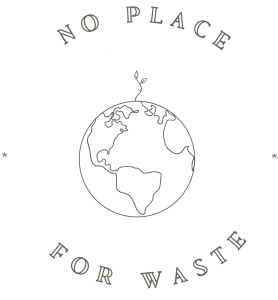When ordering a glass of water I am sure an added hint of ingestible plastic was not what you had in mind. Unfortunately, a recent study by the American Chemical Society confirmed that American’s who meet their daily water intake through only bottled sources may be ingesting 90,000 microplastics annually, with those who only consume tap water ingesting 4,000 microplastics[1].
Ingestion of microplastics is not US-specific, nor exclusive to water consumption. Another study commissioned by the World Wide Fund for Nature (WWF) found that globally we’re consuming ~2,000 tiny plastic pieces every week. That’s approximately 21 grams a month[2], and just over 250 grams a year[3]. The single largest source of plastic ingestion globally is through water, both bottled and tap. Of the consumables studied, those with the highest recorded plastic levels include shellfish, beer and salt.
What are Microplastics?
Microplastics are pieces of plastic less than 5mm in size. They are either classified as:
Primary microplastics are made-for-purpose plastics such as those used in industrial processes, personal care products (micro-beads I’m looking at you), glitter, or nurdles.
Secondary microplastics are particles that result from the breakdown of larger plastic items, such as water bottles. This breakdown can be caused by exposure to environmental factors, including the sun’s radiation and ocean waves[4]. Abrasion is another common factor that contributes to the occurrence of secondary microplastics, an example being tires and shoes which both expel microplastics into the air when met with concrete and/ or roads. Secondary microplastics also include microfibers from textiles like nylon and polyester. They often wash off clothes and enter the ecosystem through washing machine wastewater[5].
The impact
Microplastics can be found in the air we breath, our oceans and lakes as well as the food and drink we consume. The problem with microplastics is that they do not readily break down into harmless molecules. Plastics can take hundreds (and even thousands) of years to decompose and in the meantime, wreak havoc on the environment. There is estimated to be more than 15 trillion pieces of microplastic debris in the world’s oceans, 80% of which originate from land-based activities.[6]
Smaller animals including marine and freshwater invertebrates can suffer a range of effects from ingesting microplastics. For instance, plastic ingestion can cause abrasions and lesions, or physical disruption of the gastrointestinal tract, as plastics compact in the gut. Plastic ingestion can also be detrimental to the health of various animals because these indigestible particles fill the stomach and reduce the feeling of hunger which leads to starvation[7].
Studies on the impact of microplastics on the human body are emerging. What is currently known is that different types of plastic have varying toxic properties. Some are made with toxic chemicals such as plasticizers, phthalates, flame retardants and stabilizers, while others absorb trace amounts of chemicals such as PCBs and pesticides[8]. A buildup of these chemicals in our bodies over time have been found to disrupt the gut microbiome.
Plastic-free diet
Unfortunately, humans consume microplastics through many channels therefore completely avoiding them is almost impossible. Although complete elimination is not on the cards, here are a few suggestions to help reduce the number of microplastics consumed.
- Drinking tap water instead of bottled water (where safe). Filtered tap water is even better
- Decrease or stop consuming shellfish – shellfish are filter feeders making them more susceptible to consuming microplastics
- Reheat food on the stove, or in the microwave using a glass dish
- Buy and store food in glass, silicone or foil
- Vacuum/ Hoover regularly – The dust in your house could be loaded with microplastics and chemicals that are found in plastic, such as phthalates. Vacuuming/ hoovering dust may help reduce the number of plastics you inhale. Consumer Reports recommends vacuuming regularly with a HEPA filter as it is the best for trapping dust[9].
To limit the amount of microplastics you are putting into the environment consider cutting down your plastic use, ensuring any plastic you do use are disposed of correctly so that it doesn’t end up in waterways, and using a Guppy bag when washing any plastic derived clothing items to help eliminate microplastic fibres entering our waters.
If you have any other helpful tips on decreasing microplastic exposure please comment below, I would love to hear them.
[1] https://pubs.acs.org/doi/10.1021/acs.est.9b01517
[2] For additional perspective, your credit/debit card is equivalent to five grams
[3] https://wwf.panda.org/?348371/Could-you-be-eating-a-credit-card-a-week#:~:text=In%20this%20first%2Dever%20global,equivalent%20of%20a%20credit%20card.&text=That’s%20approximately%2021%20grams%20a,over%20250%20grams%20a%20year.
[4]https://www.nationalgeographic.org/encyclopedia/microplastics/#:~:text=Secondary%20microplastics%20are%20particles%20that,sun’s%20radiation%20and%20ocean%20waves.
[5] https://en.guppyfriend.com/pages/guides
[6] https://www.esr.cri.nz/our-research/research-projects/aotearoa-impacts-and-mitigation-of-microplastics-aim/
[7] https://www.ncbi.nlm.nih.gov/pmc/articles/PMC5832226/
[8] https://www.forbes.com/sites/ariellasimke/2020/01/21/there-is-plastic-in-your-fish/?sh=cc6f85b70715
[9] https://www.consumerreports.org/health-wellness/how-to-eat-less-plastic-microplastics-in-food-water/


This post is great! Keep up the good work!
LikeLike
Thank you ! X
LikeLike